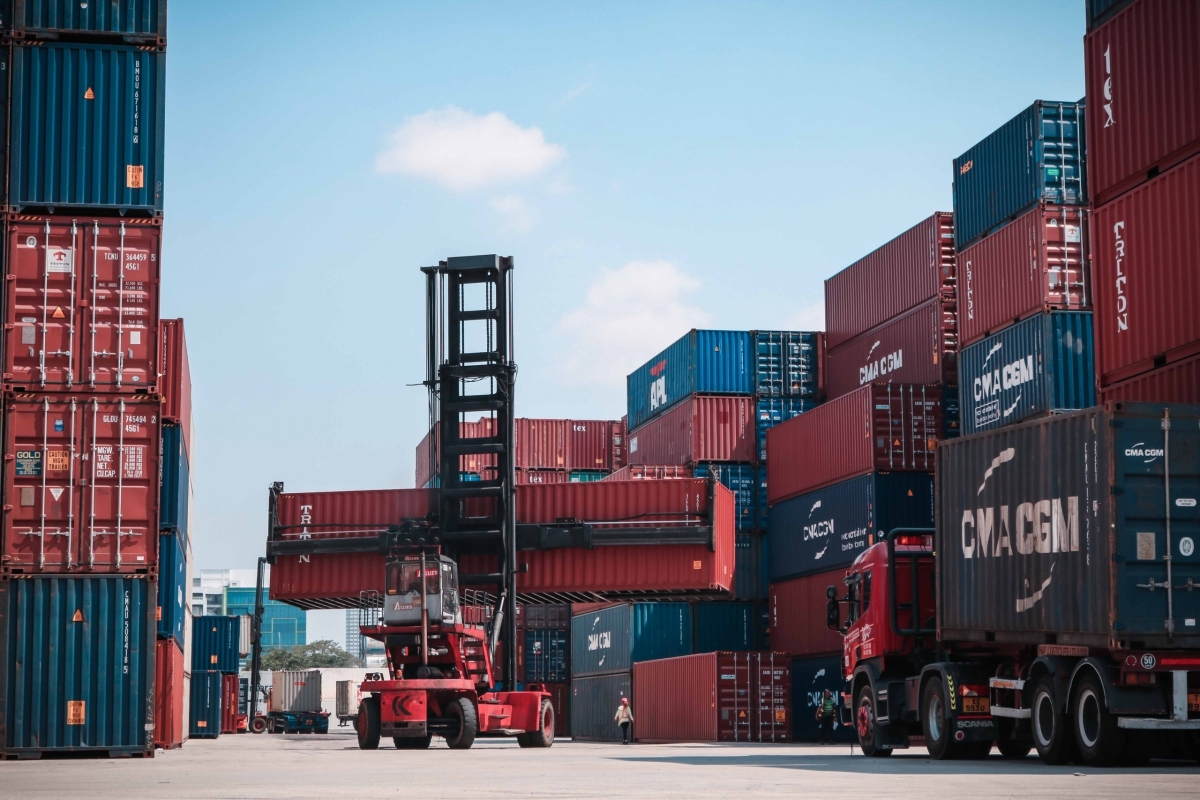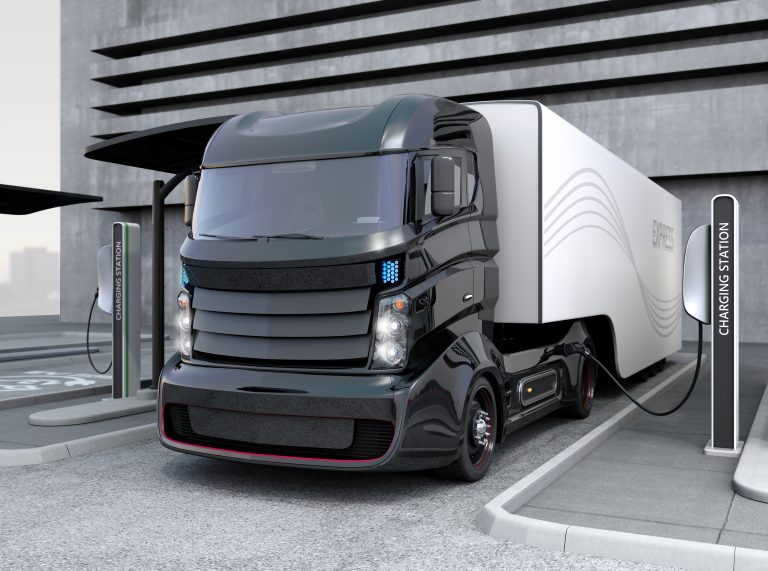Enhancing Sustainability in the Trucking Business
There’s no denying that the trucking industry has a long way to go as far as achieving full sustainability is concerned. Motorized transport emissions are a significant contributor to the global pandemic of the rise in greenhouse gas, GHG, leading to climate change. And unless the transport sector takes a U-turn towards more sustainable practices, it’s projected to contribute to a whopping 46% (single largest) of global GHG emissions by 2035.
The good news is that the global automotive industry is doing all it can to achieve eco-friendliness, so we still have hope. Even so, major trucking companies still have a long way to go if they’re looking to put environmental, social, and governance (ESG) risks under control.
In this comprehensive guide, we’ll discuss the impact of ESG on sustainability, how container trucking impacts ESG, how trucking companies can optimise their ESG strategies, and the latest industry trends. But first, what is ESG?
What is ESG?

As we’ve hinted above, ESG is an acronym for Environmental, Social, and Governance criteria. In the transport industry, ESG defines a set of guidelines that measure sustainability and the impact of ethical, societal practices on a company’s operations and performance.
ESG’s environmental guidelines assess whether a company is sufficiently aware of how its commercial operations may impact the environment. And if yes, what actions has it taken to remediate the adverse effects, considering that failure to take action may be detrimental to its reputation and financial performance. The environmental assessment weighs such elements as energy consumption, pollution, waste production, animal welfare, climate change, and natural resource preservation.
The next element in the ESG practices is the social front. It encompasses the company’s commitment to diversity, workforce, and human rights. What are the company’s human rights records? Does it engage in child/forced labour, or employee harassment? How about community engagement, health, and safety? The idea is to assess whether the tucking business is sustainable and socially-optimised both for the employees and the community.
Lastly, the governance element leans towards assessing how the business handles internal and external stakeholder relationships. Is there a sense of openness between shareholders, regular employees, and the management? The governance guidelines’ key focus areas are management qualities, conflicts of interest, shareholder rights, executive compensation, board independence, and transparency & disclosure.
What's the Importance of ESG on Sustainability?
With current issues like cultural diversity, climate change, and the need for inclusion and transparency taking center-stage, companies can’t afford to ignore ESG and sustainability today. ESG and sustainability are the key drivers of reputational uplifting and financial suitability, and companies failing to implement the best practices in their operations puts them in great jeopardy.
In particular, the environmental factors are of great concern to the transportation sector due to the nature of its operations. There’s a need for trucking companies to fully understand their operations’ environmental impacts and develop a clear-cut framework for addressing those concerns as addressed by the ESG guidelines.
With ESG’s clearly defined guidelines, trucking companies can comply with environmental laws to make their operations more sustainable and financially feasible. Also, by analysing the ecological impacts of their operations on the climate as well as what those impacts mean to their operations and employees, companies can understand what role they need to play to make it a win-win situation.
For instance, a hurricane season coupled with vicious storms in the Gulf of Thailand and the Java Sea may slow down trucking operations or even cause oil spills plus other pollution types. In the same regard, inland flooding due to hurricane storms may bar employees from reporting to work and assisting with normalizing operations or troubleshooting. The point is, these are not uncommon occurrences, and by implementing ESG/sustainability best practices, trucking companies can take proactive actions to prevent them from happening in the first place or mitigate the consequences.

Aside from environmental support, ESG may also help companies secure financing. Did you know that a below-par ESG profile may hinder a company’s chances of qualifying for loans and funding? Traditionally, credit ratings have always leaned towards sustainability risks. But recently, agencies have begun analysing ESG factors when assigning companies their credit ratings.
Today, financial participants like banks, insurers, and investors have raised the bar for trucking companies looking to secure financing. There are set ESG standards that such businesses must adhere to, focusing on the environmental footprint. Reports indicate that the social and governance factors will soon form part of the requirements by financiers before taking a full-fledge ESG monitoring. So if a trucking company wants to qualify for financing, they’ll have no choice but to adhere to the ESG standards and best practices.
What's the Impact of Container Trucking on ESG?
Container trucking mainly impacts the following ESG focus areas:
- CO2 emissions (environmental)
- Toxic emissions and waste (environmental)
- Workforce’s health and safety (social)
- Ownership structure (governance)
- Board of directors (governance)
- Management remunerations (governance)
Container trucking businesses in Southeast Asia (and the world at large) continue to register a drop in CO2 emissions, thanks to their adherence to the ESG guidelines. Today, most top-flight companies have invested in tools that enable them to calculate their emission rates and make procurement deliberations aimed to improve environmental sustainability. Companies are also opting for zero-carbon fuel to ramp up decarbonization.

Container trucking is also impacting ESG’s health and safety of the workforce. Truckers work in unique conditions that pose health and safety risks for their employees, and that’s what SG seeks to revert. Some of the common challenges that impact the workforce’s safety and health include irregular schedules, minimal physical activities, long working hours, high-stress levels, fatigue, limited access to healthy foods on the roads, etc.
Lastly, container tracking also impacts corporate governance in multiple ways. To ensure sustainability and optimal productivity, the management must comply with security regulations, tax, anti-bribery, disclosure, and money laundering requirements. What’s more, corporate officials are required to self-commit to responsible business conduct (RBC) for improved sustainability.
What are the New Trends in the Trucking Industry?
It is worth noting that the trucking sector is taking no chances as far as realizing full sustainability is concerned. Here are a few trends that will soon steer the wheel of zero-emission trucking:
Enhanced Telematics

Telematics is a heart-warming technology that will revolutionise trucking companies’ operations and clear the path towards sustainability. Controlling emissions will no longer be a hassle with multiple monitoring devices installed all over the trucks. By tracking and analysing data from these devices, truckers will be able to identify where and how they can minimise emissions and other ESG factors.
What’s more, telematics systems like IoT sensors can capture critical data like driving behaviours and engine performance. This can enable companies to identify drivers not adhering to environmental guidelines, e.g., letting the engine idle for too long or driving on deflated tires.
Route Planning Optimization
Optimised route planning is another up and coming trucking trend that will change the game. This trend aims to cut fuel consumption and misuse by planning for the shortest route possible before the truck hits the road.
By going ahead of things like traffic and bad weather, truckers can minimise downtime and fuel consumption. The trend seeks to capitalise on artificial intelligence (AI) to predict traffic jams and weather to avoid situations such as getting stuck on the road or slowing down due to rains, hurting fuel consumption.
Eco-Friendly Energy Sources

Many trucking ships have jumped ship from fossil fuel-powered vehicles to more environment-friendly options like zero-carbon fuel and electric-powered trucks. More so, electric trucks are reliable and affordable options that continue to attract more companies, thanks to their eco-friendliness and sustainability.
Though not all companies have managed to switch to electric trucking vehicles, it would significantly reduce carbon emissions if only a fraction of the industry adopts the new technology. And if every industry player switches to the more sustainable option, it would virtually scrap off carbon emissions.
Enhanced Aerodynamics
The other trend companies can explore to improve their operations for higher sustainability is to optimise aerodynamics. This ensures that the trucking vehicles encounter less dragging, which, in turn, enhances efficiency.
It has not been a norm for heavy trucks to include aerodynamic systems, leading to a loss in crucial design areas. However, that’s old news as trucking companies have taken a step to redesign their vehicles with improved aerodynamics. And the results? They’ve recorded a decrease in carbon footprints, tracks move faster, and delivery times have also improved.
Wrap Up
Pursuing sustainability in the trucking industry has never been more critical. With the world currently grappling with the effects of global warming, truckers must play their part in minimising CO2 emissions and other greenhouse gases that cause the problem in the first place.
Keen to Find Out More?
Here at Haulio, we dedicate our expertise and resources to helping our clients optimise management and trucking services in real-time. If you’re a trucking company looking to simplify work, streamline operations, and unlock more opportunities through innovative, intelligent technology, Haulio is your reliable partner. Sign up today, and let us maximise your trucking services for enhanced sustainability.






